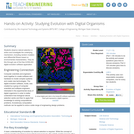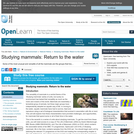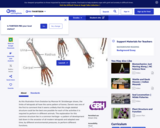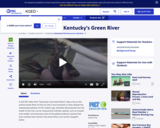
- Subject:
- Psychology
- Social Science
- Material Type:
- Unit of Study
- Provider:
- Rice University
- Provider Set:
- OpenStax College


By the end of this section, you will be able to:Explain the basic principles of the theory of evolution by natural selectionDescribe the differences between genotype and phenotypeDiscuss how gene-environment interactions are critical for expression of physical and psychological characteristics


Students observe natural selection in action and investigate the underlying mechanism, including random mutation and differential fitness based on environmental characteristics. They do this through use of the free AVIDA-ED digital evolution software application.

Some of the most unusual and versatile of all the mammals are the groups that live, feed and reproduce underwater. In this unit we will see how these formerly land-based mammals adapted to a return to the water, discussing such challenges as breathing, mo

The peacock provides a classic example of sexual selection, the force behind nature's extravagances. From Evolution: "Why Sex?"

This illustration from Evolution by Monroe W. Strickberger shows the remarkable similarities between the bones in the forelimbs of various tetrapods, all of whose limbs serve very different functions.

This video from Kentucky's Last Great Places shows how the Green River has remained unusually clean and why it is home to several endangered aquatic species.

Learn about different traits and adaptations in various species of hummingbirds in this video from Nature.

This lesson introduces students to the concepts of evolution, specifically the evolution of humans. So often our students assume that humans are well adapted to our environments because we are in control of our evolutionary destiny. The goal is to change these types of misconceptions and get our students to link the concepts learned in their DNA, protein synthesis, and genetics units to their understanding of evolution. Students will also discover that humans are still evolving and learn about the traits that are more recent adaptations to our environment. The lesson is designed to take two one-hour class periods to complete. The activities will allow students to draw connections between environmental pressures and selected traits, both through data analysis and modeling. Most activities can be done without any special materials, although the Modeling Natural Selection activity needs either a tri-colored pasta, or tricolored beans, to be completed effectively.